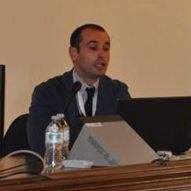Design of Special Structures for Lateral Loads
A special issue of Applied Sciences (ISSN 2076-3417). This special issue belongs to the section "Mechanical Engineering".
Deadline for manuscript submissions: closed (10 March 2022) | Viewed by 29810
Special Issue Editors
Interests: structural analysis; finite element modeling; structural dynamics; nonlinear analysis; structural stability; modal analysis; steel; steel structures; structure analysis
Special Issues, Collections and Topics in MDPI journals
Interests: experimental wind engineering (wind tunnels/open jet testing); computational wind engineering; performance and resiliency of the built environment under wind impact (new and existing infrastructure: low-rise buildings, tall buildings, bridges, power transmission lines and towers, solar panels, wind turbines, offshore structures, green building envelope, etc.); structural dynamics; structural control/mitigation under wind/earthquake loading; dissipative analysis; smart structures
Special Issues, Collections and Topics in MDPI journals
Interests: finite element modeling; structural analysis; earthquake engineering; structural dynamics; finite element analysis; construction; construction engineering; civil engineering materials; construction materials; building materials
Special Issue Information
Dear Colleagues,
Today, engineers and researchers are facing more challenges related to the design of non-standard or special structures, such as tall buildings, steel storage racks, wind turbines, industrial chimneys, etc. Independently from the material with which the structures are made (steel, reinforced concrete, or masonry), the knowledge required to understand the behavior of such complex constructions is indispensable, especially when these structures are subjected to lateral loads, i.e., earthquake and wind. The design of such structures is governed mainly by their modal properties, dynamic behavior, and slenderness. These governing factors should be treated with caution during the design phase, by using advanced nonlinear modeling techniques or refined models calibrated by experimental data. Some of the main design issues are related to resonance, instability of principal members, non-symmetric elements, the use of thin-walled profiles, and the behavior of the connections.
This Special Issue aims to include articles and review papers addressing the behavior of different special structures under earthquake and/or wind loads. We welcome manuscripts in the field of:
- Modeling techniques for the seismic behavior of non-standard structures;
- Design of tall structures (steel wind turbines, chimney, high-rise buildings, etc.) for wind and/or seismic loads;
- Design and development of vibration mitigation systems/devices;
- Design and analysis of base isolation systems;
- The behavior of structures made of thin-walled and non-symmetric members;
- Analysis of special beam-to-column and base-plate connections.
Dr. Marco Simoncelli
Prof. Dr. Aly-Mousaad Aly
Dr. Marco Zucca
Guest Editors
Manuscript Submission Information
Manuscripts should be submitted online at www.mdpi.com by registering and logging in to this website. Once you are registered, click here to go to the submission form. Manuscripts can be submitted until the deadline. All submissions that pass pre-check are peer-reviewed. Accepted papers will be published continuously in the journal (as soon as accepted) and will be listed together on the special issue website. Research articles, review articles as well as short communications are invited. For planned papers, a title and short abstract (about 250 words) can be sent to the Editorial Office for assessment.
Submitted manuscripts should not have been published previously, nor be under consideration for publication elsewhere (except conference proceedings papers). All manuscripts are thoroughly refereed through a single-blind peer-review process. A guide for authors and other relevant information for submission of manuscripts is available on the Instructions for Authors page. Applied Sciences is an international peer-reviewed open access semimonthly journal published by MDPI.
Please visit the Instructions for Authors page before submitting a manuscript. The Article Processing Charge (APC) for publication in this open access journal is 2400 CHF (Swiss Francs). Submitted papers should be well formatted and use good English. Authors may use MDPI's English editing service prior to publication or during author revisions.
Keywords
- Dynamics and stability
- Wind loads
- Tall buildings
- Wind turbines
- Steel storage racks
- Chimney
- Vibration suppression
- Viscous dampers
- Base isolation
Benefits of Publishing in a Special Issue
- Ease of navigation: Grouping papers by topic helps scholars navigate broad scope journals more efficiently.
- Greater discoverability: Special Issues support the reach and impact of scientific research. Articles in Special Issues are more discoverable and cited more frequently.
- Expansion of research network: Special Issues facilitate connections among authors, fostering scientific collaborations.
- External promotion: Articles in Special Issues are often promoted through the journal's social media, increasing their visibility.
- Reprint: MDPI Books provides the opportunity to republish successful Special Issues in book format, both online and in print.
Further information on MDPI's Special Issue policies can be found here.







